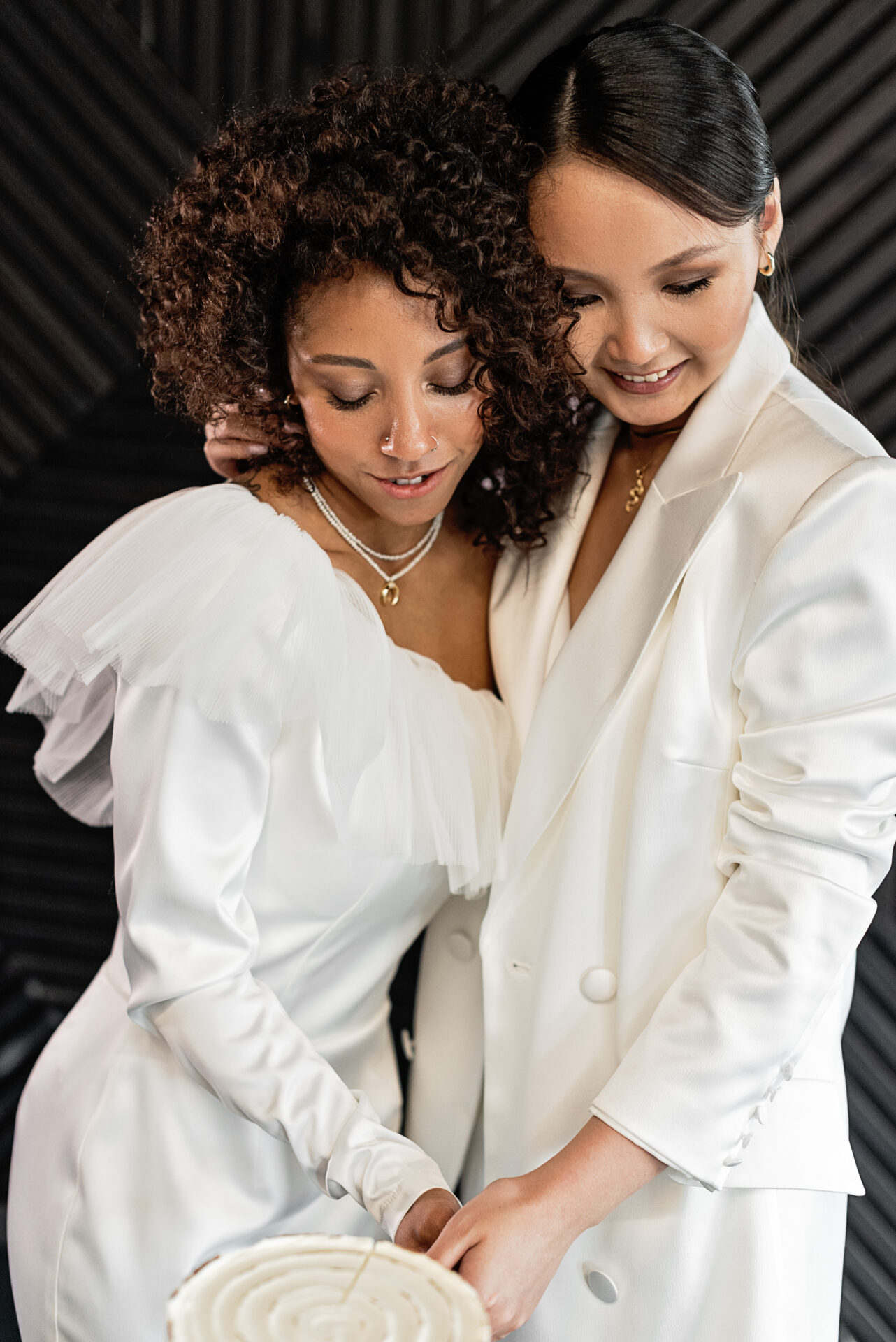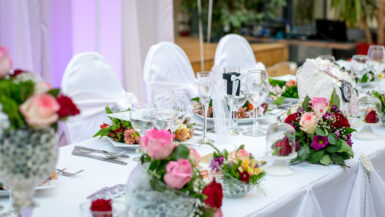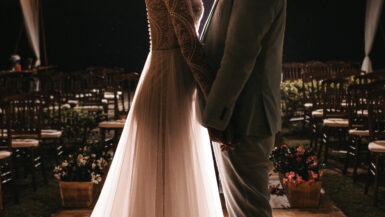In recent years, the concept of sustainable living has gained significant traction, encouraging individuals to make more environmentally-friendly choices in various aspects of their lives. One such area where this eco-conscious approach can be adopted is wedding planning. Creating unforgettable memories while minimizing the environmental impact is an admirable goal, and this article aims to provide you with some inspiring green wedding centerpiece ideas. We will delve into the importance of using locally sourced, seasonal materials, as well as incorporating upcycled or repurposed elements to ensure that your special day is not only a beautiful celebration of love but also a responsible tribute to our planet.
Succulent Plant Decorations
One of the most popular and eco-friendly options for green wedding centerpieces is the use of succulent plants. These versatile, low-maintenance plants not only add a touch of natural beauty to your wedding décor but can also be easily repurposed or gifted to your guests after the event, reducing waste. In this section, we will explore the various ways you can incorporate succulents into your wedding centerpieces, as well as some creative ideas for showcasing these charming plants.
Creating Succulent Arrangements
When designing your succulent centerpieces, consider using a mix of different shapes, sizes, and colors to create a visually appealing arrangement. You can place them in rustic wooden boxes, vintage teacups or mason jars, or even create a terrarium using a glass container. To add an extra touch of greenery, consider incorporating moss, pebbles, or other natural elements alongside your succulents. This will not only enhance the aesthetic appeal but also contribute to a more sustainable decoration choice.
Personalizing Your Centerpieces
Adding a personalized touch to your succulent centerpieces can make them even more memorable for your guests. For example, you can create custom name tags or labels that include the names of each guest, the wedding date, or a meaningful quote. You can also use small chalkboards or wooden signs to display table numbers or names, seamlessly integrating your succulents into your seating arrangements.
Pairing Succulents with Other Eco-Friendly Elements
Succulents can be easily combined with other eco-friendly elements to create stunning centerpieces. For instance, you can pair them with locally-sourced, seasonal flowers or foliage to add a pop of color and texture. Alternatively, you can use dried or preserved flowers, which have a longer shelf life and can be repurposed post-wedding. Another creative idea is to incorporate upcycled materials such as wine bottles, tin cans, or old books as part of the centerpiece design, adding a touch of rustic charm while reducing waste.
Complementing Your Green Wedding Theme
When planning a sustainable wedding, it’s essential to maintain a consistent theme throughout your event. Succulent centerpieces can beautifully complement other green wedding elements, such as eco-friendly photo booth ideas, organic catering options, and biodegradable or reusable dinnerware. By incorporating succulents and other environmentally conscious choices into your wedding décor, you can create a cohesive and elegant celebration that reflects your commitment to sustainability.
Overall, succulent plant decorations are an excellent choice for couples looking to reduce their environmental footprint while still creating beautiful and memorable centerpieces. With their versatility, low-maintenance nature, and endless design possibilities, succulents are the perfect addition to any eco-friendly wedding celebration.
Organic Candle Displays
Another captivating and eco-friendly option for green wedding centerpieces is the use of organic candles. These sustainable alternatives to traditional candles are made from natural materials such as beeswax, soy, or coconut wax, and are free of harmful chemicals and synthetic fragrances. Incorporating organic candles into your wedding décor not only adds a warm, romantic ambiance, but also supports a cleaner environment. In this subsection, we will explore creative ways to design organic candle displays and how to combine them with other sustainable elements for a truly green wedding centerpiece.
Elevating Your Candle Arrangements
When designing your organic candle centerpieces, consider using a variety of candle shapes, sizes, and colors to create a visually engaging display. You can use elegant candlesticks, votives, or pillar candles to achieve the desired effect. To further enhance the aesthetic, consider placing the candles on decorative trays, mirrors, or wooden slabs. The reflective surfaces will amplify the glow and create a warm, inviting atmosphere for your guests.
Integrating Natural Elements
Organic candles can be beautifully combined with other natural elements to create a stunning and sustainable centerpiece. Consider surrounding your candles with locally-sourced, seasonal flowers, herbs, or greenery to add texture and color to the arrangement. You can also incorporate eco-friendly materials such as driftwood, stones, or dried fruits and nuts for a unique and earthy touch.
Personalizing Your Candle Displays
Adding a personalized touch to your organic candle centerpieces can make them even more special and memorable for your guests. For example, you can create custom labels for the candles with the names of each guest, the wedding date, or a meaningful quote. Another idea is to incorporate table numbers or names using small chalkboards, wooden signs, or engraved metal plates that are consistent with your green wedding theme.
Choosing Eco-Friendly Candle Options
When selecting organic candles for your wedding centerpieces, it’s essential to consider the environmental impact of your choices. Opt for candles made from sustainable materials such as beeswax or soy wax, which are biodegradable and produce minimal soot. Additionally, look for candles with natural wicks, such as cotton or wood, and avoid those containing metal cores or synthetic fragrances that can release harmful chemicals when burned.
Organic candle displays are a versatile and environmentally-friendly choice for couples looking to create a warm and inviting ambiance at their green wedding celebration. By carefully selecting sustainable materials and creatively incorporating natural elements, you can design captivating centerpieces that align with your eco-conscious values and leave a lasting impression on your guests.
Natural Tablescapes with Seasonal Elements
Embracing the beauty of nature in your green wedding centerpiece ideas is both sustainable and visually stunning. By incorporating seasonal elements into your tablescape design, you support local businesses, reduce the carbon footprint of your wedding, and create a unique, organic atmosphere that reflects the current season. In this subsection, we will explore the various ways you can create natural tablescapes using seasonal elements and how to enhance the visual impact of your centerpieces with creative, eco-friendly touches.
Choosing Locally-Sourced, Seasonal Elements
Selecting the right seasonal elements for your natural tablescape involves considering both the time of year and the availability of locally-sourced materials. Whether it’s vibrant wildflowers in the spring, lush greenery in the summer, colorful foliage in the fall, or bare branches and pinecones in the winter, there are countless options to suit any seasonal wedding theme. By choosing locally-sourced materials, you not only support your community but also reduce the environmental impact of your wedding décor.
Designing Unique, Seasonal Centerpieces
Creativity is key when designing your natural tablescape centerpieces. Consider using unconventional items such as fruits, vegetables, or even herbs to create a visually appealing arrangement that reflects the current season. For example, you can use pumpkins, gourds, or apples in a fall tablescape, or incorporate colorful citrus fruits or fresh lavender sprigs in a summer celebration. The possibilities are endless, and these unexpected elements can add a delightful touch of whimsy to your wedding décor.
Incorporating Sustainable, Reusable Materials
When creating your natural tablescape, consider using sustainable, reusable materials to further enhance the eco-friendly aspect of your wedding. For instance, you can use cloth napkins or table runners made from organic or recycled fabrics, or incorporate biodegradable or reusable dinnerware. Additionally, consider using upcycled containers such as mason jars, tin cans, or wooden crates to display your seasonal elements, adding a rustic charm to your table arrangement.
Adding Ambient Lighting
Ambient lighting can significantly enhance the overall aesthetic of your natural tablescape. As mentioned in the previous subsection, organic candles can be an excellent addition to your centerpiece design, creating a warm, inviting atmosphere. Alternatively, you can opt for LED string lights or solar-powered lanterns, which are both energy-efficient and environmentally-friendly options to illuminate your seasonal arrangements.
A natural tablescape with seasonal elements is an ideal choice for couples looking to celebrate their love while remaining mindful of the environment. By thoughtfully selecting locally-sourced materials and incorporating sustainable, reusable items, you can create a visually stunning and eco-conscious centerpiece that reflects the beauty of the season and leaves a lasting impression on your guests.
Upcycled Wedding Centerpieces
Embracing the concept of upcycling in your wedding centerpieces not only adds a unique, personalized touch to your special day but also significantly reduces waste and supports sustainability. By creatively repurposing everyday items or using reclaimed materials, you can design one-of-a-kind centerpieces that reflect your commitment to an eco-conscious lifestyle. In this subsection, we will explore various ways to create upcycled wedding centerpieces and how to seamlessly integrate them into your green wedding theme.
Discovering Unexpected Treasures
When searching for upcycled materials to use in your wedding centerpieces, consider exploring thrift stores, garage sales, or even your own attic for hidden treasures. Vintage items such as teacups, glassware, or old books can add a touch of charm and nostalgia to your centerpieces. Additionally, you can repurpose common household items like tin cans, wine bottles, or mason jars to create simple yet elegant displays for your floral arrangements or candles.
Transforming Ordinary Items into Extraordinary Centerpieces
With a little creativity and imagination, you can turn ordinary items into stunning upcycled wedding centerpieces. For example, you can paint old wine bottles or tin cans in your wedding colors and use them as vases for locally-sourced, seasonal flowers. Alternatively, you can create a unique centerpiece by stacking vintage books and adorning them with organic candles, succulents, or greenery. The key is to think outside the box and find innovative ways to repurpose everyday objects into eye-catching, eco-friendly decorations.
Enhancing Your Upcycled Centerpieces with Sustainable Elements
To further emphasize your commitment to sustainability, consider incorporating additional eco-friendly elements into your upcycled centerpieces. This can include using organic candles, dried or preserved flowers, or locally-sourced greenery to complement your repurposed items. Additionally, you can use recycled or biodegradable materials such as paper, cardboard, or wood for table numbers, name cards, or other decorative accents.
Integrating Upcycled Centerpieces into Your Green Wedding Theme
When planning a sustainable wedding, it’s essential to maintain a consistent theme throughout your event. Upcycled centerpieces can beautifully complement other green wedding elements, such as eco-friendly photo booth ideas, organic catering options, and biodegradable or reusable dinnerware. By incorporating upcycled items and other environmentally conscious choices into your wedding décor, you can create a cohesive and elegant celebration that reflects your commitment to sustainability.
Ultimately, upcycled wedding centerpieces are an excellent way to showcase your creativity and dedication to sustainable living. By repurposing everyday items and incorporating eco-friendly elements into your designs, you can create memorable and unique centerpieces that not only enhance the beauty of your event but also contribute to a more sustainable future for our planet.
Eco-friendly Floral Arrangements
Flowers are an integral part of any wedding celebration, adding a touch of natural beauty and elegance to your special day. When planning a green wedding, it’s important to consider the environmental impact of your floral choices and opt for eco-friendly alternatives that align with your sustainability goals. In this subsection, we will explore various ways to create eco-friendly floral arrangements for your wedding centerpieces and how to incorporate sustainable practices throughout the process.
Selecting Locally-Sourced, Seasonal Blooms
One of the key aspects of creating eco-friendly floral arrangements is choosing locally-sourced, seasonal flowers. This not only supports local farmers and florists but also reduces the carbon footprint associated with transportation and refrigeration of imported blooms. Additionally, seasonal flowers tend to be more affordable and have a fresher, more vibrant appearance. When selecting your flowers, consult with your florist to identify the best options available in your region during the time of your wedding.
Opting for Organic and Pesticide-Free Flowers
Another important factor to consider when selecting flowers for your eco-friendly centerpieces is the use of organic and pesticide-free blooms. Conventional flowers are often grown using harmful chemicals and pesticides that can have detrimental effects on the environment, as well as on the health of the workers involved in their cultivation. By choosing organic or pesticide-free flowers, you are not only creating a healthier atmosphere for your wedding guests but also supporting environmentally responsible practices within the floral industry.
Repurposing and Donating Your Floral Arrangements
Reducing waste is a crucial aspect of sustainable wedding planning, and this principle can be applied to your floral centerpieces as well. After the wedding, consider repurposing or donating your floral arrangements to reduce waste and extend their lifespan. You can gift them to your guests as a thoughtful memento, or donate them to local hospitals, nursing homes, or other organizations that would appreciate the gesture. This not only minimizes waste but also brings joy and happiness to others beyond your wedding celebration.
Incorporating Non-Floral Elements
Another creative way to design eco-friendly floral arrangements is by incorporating non-floral elements into your centerpieces. This can include items such as succulents, herbs, fruits, or even decorative branches, which can add texture and visual interest to your arrangements while reducing the overall environmental impact. By combining these alternative elements with your locally-sourced, organic flowers, you can create unique and captivating centerpieces that showcase your commitment to sustainable living.
Choosing Reusable or Biodegradable Containers
The containers you use for your floral arrangements can also play a significant role in the overall sustainability of your centerpieces. Opt for reusable or biodegradable containers, such as glass vases, ceramic pots, or even upcycled items like mason jars or tin cans. By making conscious choices about the materials used in your centerpieces, you can further enhance the eco-friendly aspect of your wedding décor.
Ultimately, eco-friendly floral arrangements are a way to celebrate the beauty of nature while minimizing the environmental impact of your wedding centerpieces. By carefully selecting locally-sourced, organic flowers, and incorporating sustainable practices throughout the process, you can create stunning floral displays that not only enhance the atmosphere of your special day but also contribute to the well-being of our planet and its inhabitants.




Leave a reply